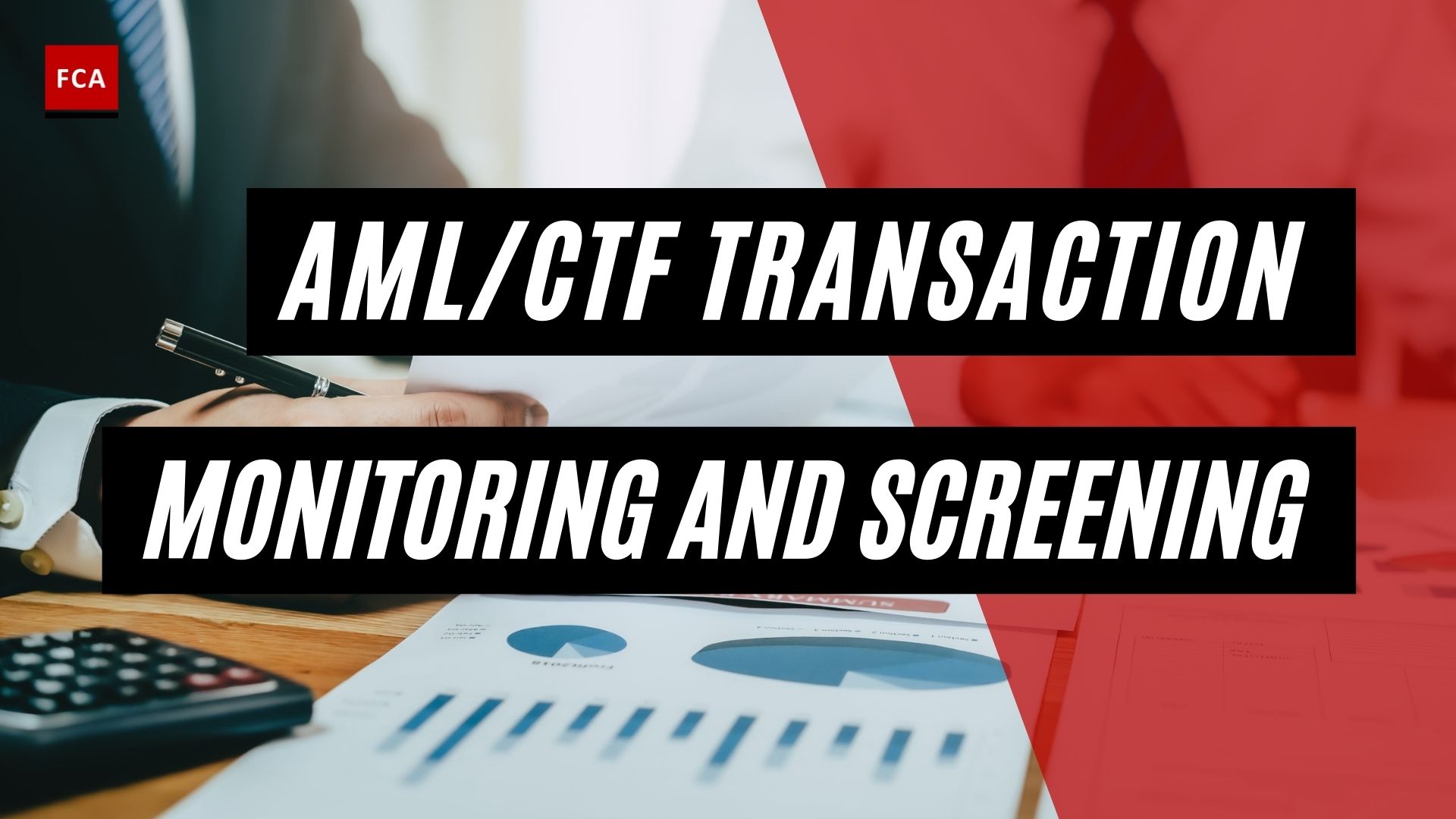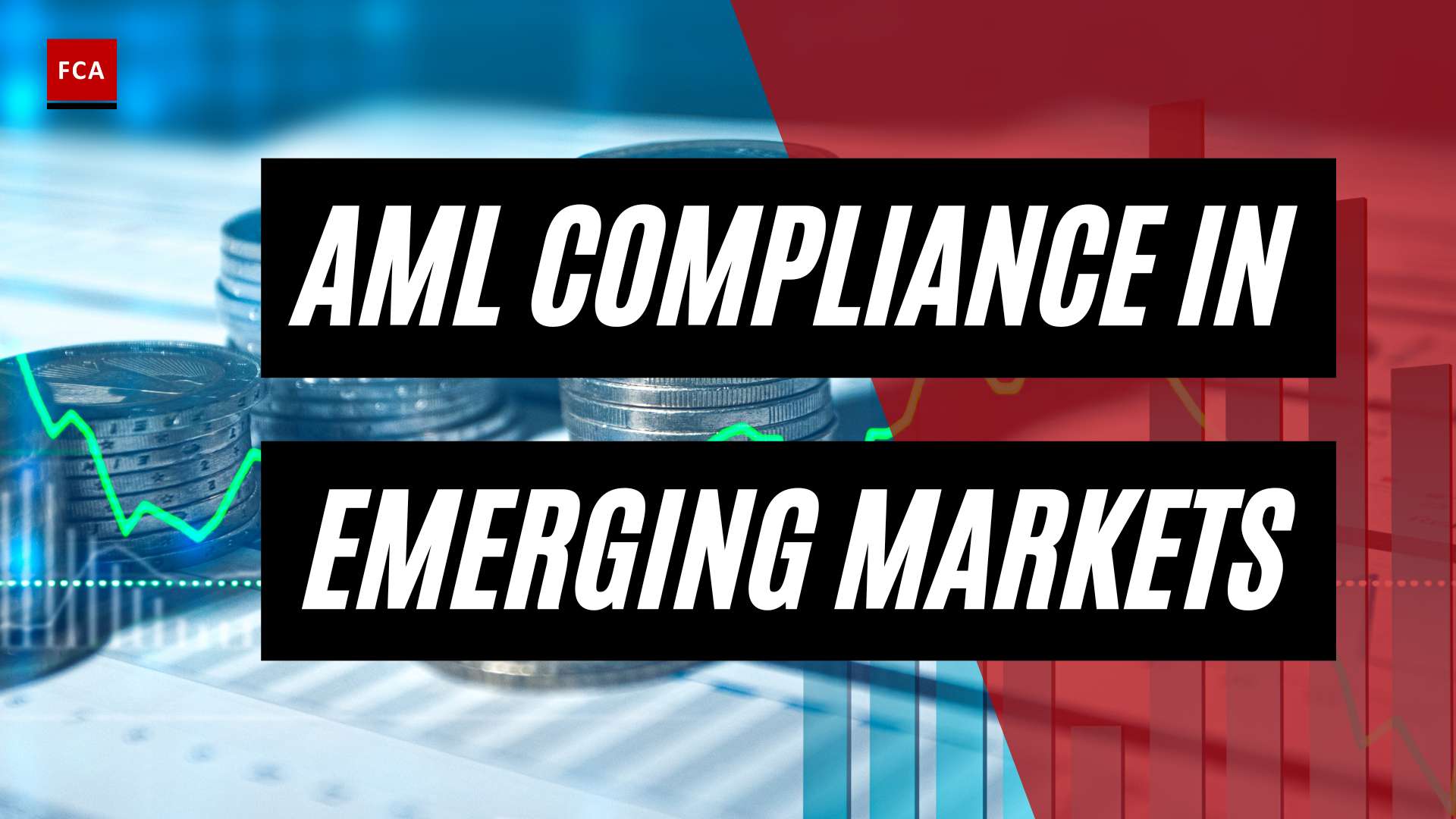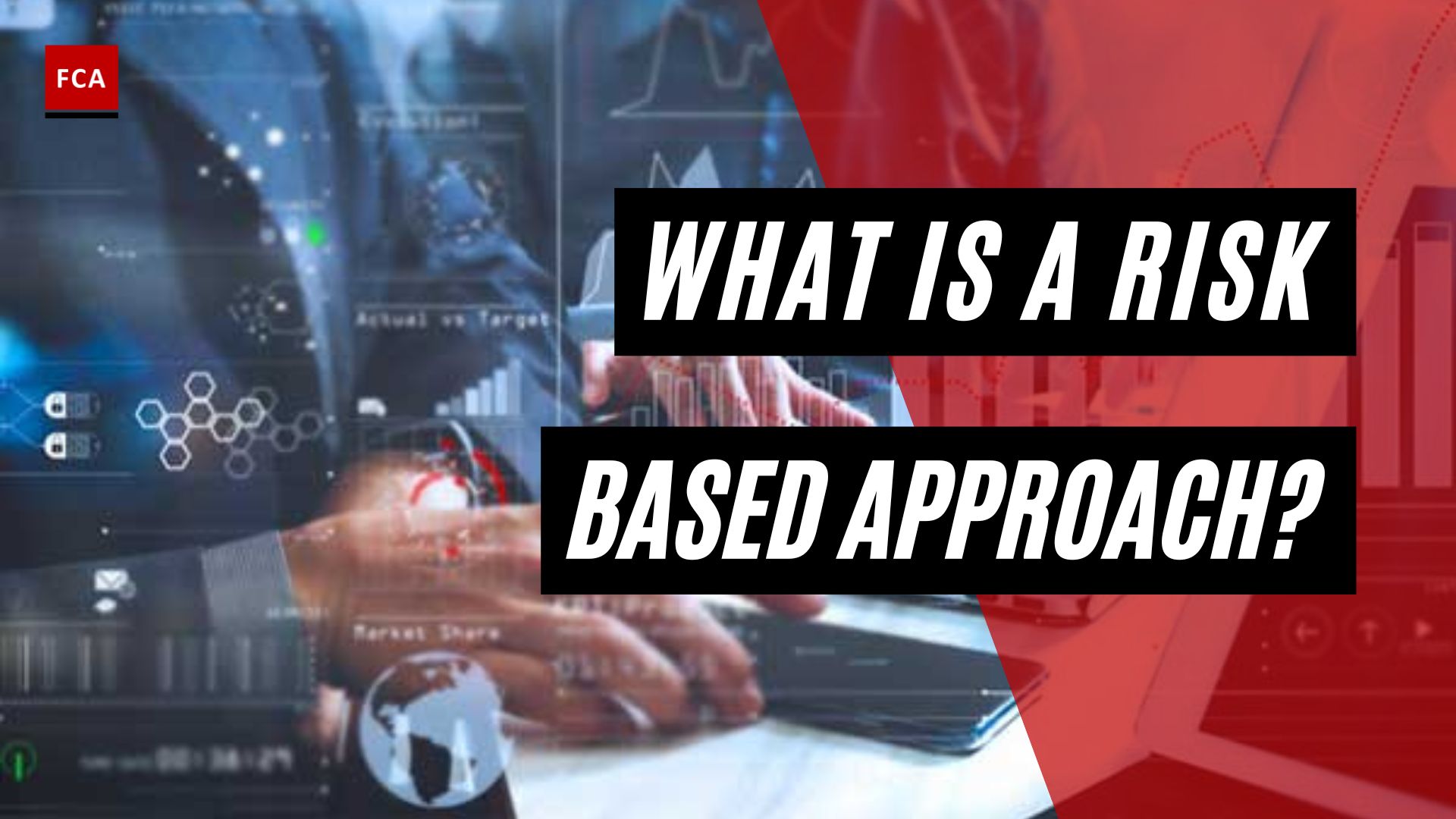Understanding AML Regulations
To combat money laundering and terrorist financing, governments around the world have implemented Anti-Money Laundering (AML) regulations. These regulations require businesses, particularly those in the financial sector, to establish robust measures to prevent the use of their services for illicit purposes.
Introduction to AML Regulations
AML regulations are designed to protect financial institutions from being unwittingly involved in money laundering activities. They aim to ensure that businesses have effective systems and controls in place to identify, prevent, and report suspicious transactions. By doing so, these regulations contribute to maintaining the integrity of the financial system.
Financial institutions, such as banks, brokerage firms, and insurance companies, are at the forefront of AML compliance due to their role in facilitating financial transactions. However, AML regulations extend beyond the financial sector, covering various industries that may be vulnerable to money laundering risks, such as real estate, casinos, and professional service providers.
Purpose of AML Regulations
The purpose of AML regulations is twofold. Firstly, they aim to deter criminals from using legitimate businesses for money laundering purposes. Money laundering involves disguising the origins of illicit funds to make them appear legitimate. By establishing stringent compliance requirements, AML regulations create barriers and risks for money launderers, making it more difficult for them to exploit businesses for their illicit activities.
Secondly, AML regulations contribute to the identification and reporting of suspicious transactions. Financial institutions and other covered businesses are required to implement procedures to detect potentially suspicious activities. They must report these activities to the appropriate authorities, such as law enforcement or regulatory agencies, through various reporting mechanisms.
By creating a framework for businesses to follow, AML regulations help ensure that organizations have the necessary tools and processes in place to combat money laundering effectively. These regulations also promote cooperation between businesses and regulatory authorities in identifying and preventing financial crimes.
Understanding the introduction and purpose of AML regulations is crucial for businesses, as it sets the stage for comprehending the compliance obligations and reporting requirements they must adhere to. In the next sections, we will explore the impact of AML regulations on businesses, the reporting requirements they need to fulfill, and the consequences of non-compliance.
Impact of AML Regulations on Businesses
Anti-Money Laundering (AML) regulations have a significant impact on businesses, requiring them to fulfill specific compliance obligations and adhere to reporting requirements. Failure to comply with these regulations can lead to severe consequences. Let’s explore the compliance obligations for businesses and the potential consequences of non-compliance.
Compliance Obligations for Businesses
Under AML regulations, businesses are required to implement robust measures to prevent money laundering and terrorist financing. These measures include:
-
Risk Assessment: Conducting a thorough risk assessment to identify and mitigate money laundering and terrorist financing risks associated with their operations.
-
Customer Due Diligence (CDD): Implementing customer due diligence procedures to verify the identity of customers, understand the nature of their transactions, and assess the risk they pose.
-
Recordkeeping: Maintaining comprehensive records of customer identification, transactions, and other relevant information in accordance with AML regulations.
-
Reporting: Reporting suspicious activities, large cash transactions, and other relevant information to the appropriate authorities. This includes filing Suspicious Activity Reports (SARs) and Currency Transaction Reports (CTRs).
-
Training and Awareness: Providing regular training to employees to ensure they understand their roles and responsibilities in preventing money laundering and terrorist financing.
By fulfilling these compliance obligations, businesses contribute to the overall effort of combating financial crimes and protecting the integrity of the financial system.
Consequences of Non-Compliance
Non-compliance with AML regulations can have severe consequences for businesses. These consequences may include:
-
Financial Penalties: Regulatory authorities have the power to impose substantial fines on non-compliant businesses. These fines can range from thousands to millions of dollars, depending on the severity of the violation and the size of the business.
-
Reputational Damage: Non-compliance can result in negative publicity and damage the reputation of the business. This can lead to a loss of customer trust, decreased business opportunities, and difficulties in attracting investors.
-
Loss of Business: Non-compliance with AML regulations can result in the termination of relationships with financial institutions or other business partners who may consider non-compliant businesses as high-risk. This can lead to a loss of business opportunities and restricted access to banking services.
-
Legal Consequences: In some cases, non-compliance with AML regulations may result in legal actions against the business or responsible individuals, such as directors or officers. Criminal charges can be filed, leading to potential imprisonment or other legal penalties.
To avoid these consequences, businesses must prioritize AML compliance and establish effective compliance programs. This includes appointing an AML compliance officer and implementing measures to ensure ongoing compliance with AML regulations.
By understanding the compliance obligations and potential consequences of non-compliance, businesses can take proactive steps to meet their AML obligations and protect their operations from financial and reputational risks.
Reporting Requirements for Businesses
Under AML regulations, businesses are obligated to fulfill various reporting requirements to aid in the detection and prevention of money laundering activities. These reporting obligations help regulatory authorities track and investigate suspicious transactions. The key reporting requirements for businesses include Suspicious Activity Reports (SARs), Currency Transaction Reports (CTRs), and Customer Due Diligence (CDD) reports.
Suspicious Activity Reports (SARs)
Suspicious Activity Reports (SARs) are an essential tool for businesses to report any transactions or activities that appear suspicious or potentially related to money laundering. SARs play a crucial role in identifying and reporting potential financial crimes to the appropriate authorities. By submitting SARs, businesses contribute to maintaining the integrity of the financial system and aid in investigations.
When a business becomes aware of a transaction that raises suspicions, such as inconsistent activity patterns, unusual large transactions, or transactions lacking an apparent lawful purpose, it is required to file a SAR with the relevant regulatory authority. The SAR should include relevant details about the suspicious activity, including the individuals or entities involved, the nature of the activity, and any supporting documentation or evidence.
Currency Transaction Reports (CTRs)
Currency Transaction Reports (CTRs) are another important reporting requirement imposed on businesses. CTRs are designed to track and monitor cash transactions above a certain threshold. These reports help regulatory authorities identify potential money laundering activities involving large sums of cash.
When a business receives or disburses a cash transaction exceeding the specified threshold, it is obligated to file a CTR with the appropriate regulatory authority. The CTR includes information about the transaction, such as the date, time, amount, and the individuals or entities involved.
Customer Due Diligence (CDD) Reports
Customer Due Diligence (CDD) is an integral part of AML compliance for businesses. It involves verifying the identity of customers, assessing the risk they pose, and monitoring their transactions to identify any suspicious activities. CDD reports provide a comprehensive understanding of the customer’s profile and help businesses detect potential money laundering or terrorist financing activities.
Businesses must conduct CDD as part of their ongoing monitoring obligations. This involves collecting and verifying customer identification information, understanding the nature and purpose of the customer relationship, and assessing the customer’s risk profile. Enhanced Due Diligence (EDD) may be necessary for high-risk customers, politically exposed persons (PEPs), and transactions from high-risk countries.
By fulfilling reporting requirements, businesses contribute to the overall efforts to combat money laundering and financial crimes. These reports enable regulatory authorities to identify and investigate suspicious activities, ensuring the integrity of the financial system.
To learn more about AML regulations and reporting requirements for businesses, read our comprehensive guide on aml regulation compliance for businesses.
Enforcement of AML Regulations
To ensure compliance with AML regulations and combat money laundering effectively, regulatory authorities and oversight play a crucial role. These entities are responsible for enforcing AML regulations, conducting audits, and imposing penalties for non-compliance.
Regulatory Authorities and Oversight
Regulatory authorities, such as the Financial Crimes Enforcement Network (FinCEN) in the United States and the Office of Financial Sanctions Implementation (OFSI) in the UK, oversee AML compliance efforts within the financial sector. These authorities establish guidelines and standards, monitor compliance, and impose penalties for violations.
In the United States, FinCEN, a bureau of the Department of the Treasury, is dedicated to safeguarding the financial system from illicit activities. It works alongside other regulatory bodies, such as the Securities and Exchange Commission (SEC) and the Financial Industry Regulatory Authority (FINRA), to ensure AML compliance across various sectors of the financial industry (FINRA). Similarly, the OFSI in the UK is responsible for enforcing financial sanctions and promoting compliance with AML regulations.
These regulatory authorities actively monitor businesses to ensure adherence to AML regulations. Their oversight includes conducting audits, investigations, and examinations to assess compliance levels. They also provide guidance and resources to help businesses understand and implement effective AML compliance programs.
Audits and Penalties for Non-Compliance
As part of their enforcement efforts, regulatory authorities conduct regular audits and examinations of businesses to assess their compliance with AML regulations. These audits evaluate various aspects, including the implementation of AML policies and procedures, recordkeeping practices, customer due diligence (CDD) measures, and reporting requirements.
Non-compliance with AML regulations can have serious consequences for businesses. Penalties for non-compliance may include monetary fines, reputational damage, loss of business opportunities, and even criminal charges for individuals involved in financial crime. The severity of penalties depends on the nature and extent of the violations.
To illustrate the potential consequences, failure to comply with AML regulations can result in substantial fines imposed by regulatory authorities. These fines can range from thousands to millions of dollars, significantly impacting a business’s financial stability and reputation (Financial Crime Academy). Additionally, non-compliance can lead to criminal prosecution for responsible individuals, such as directors or officers of the company.
It is essential for businesses to prioritize AML compliance and establish robust internal controls to mitigate the risks associated with non-compliance. By implementing effective AML compliance programs and diligently adhering to regulatory requirements, businesses can avoid penalties, protect their reputation, and contribute to the overall integrity of the financial system.
In the next section, we will explore the requirements for building effective AML compliance programs, which are crucial for businesses to meet their obligations and avoid the consequences of non-compliance.
Building Effective AML Compliance Programs
To ensure compliance with Anti-Money Laundering (AML) regulations and reporting requirements, businesses are required to establish and maintain robust AML compliance programs. These programs are designed to identify and mitigate money laundering risks effectively. Additionally, ongoing employee training and the designation of an AML compliance officer are integral components of these programs.
AML Compliance Program Requirements
Under AML regulations, businesses must establish an AML compliance program tailored to their specific risk profile and the nature of their operations. The program should include the following key elements:
-
Internal Policies and Procedures: Businesses should develop and implement comprehensive policies and procedures that address AML compliance obligations. These policies and procedures should cover customer due diligence, recordkeeping, monitoring transactions, reporting suspicious activities, and complying with applicable laws and regulations.
-
Risk Assessment: Conducting a thorough risk assessment is crucial to identify and understand the money laundering risks associated with the business’s operations. This assessment helps determine the level of due diligence necessary for customers and transactions, as well as the appropriate monitoring activities.
-
Customer Due Diligence (CDD): AML regulations require businesses to conduct customer due diligence to verify the identity of customers, monitor transactions, and assess the potential risk of money laundering activities. This process involves collecting relevant information, such as identification documents, and conducting ongoing monitoring of customer transactions.
-
Ongoing Monitoring and Reporting: Businesses must establish procedures to monitor customer transactions continuously. This allows for the detection of suspicious activities that may indicate potential money laundering. Suspicious Activity Reports (SARs) and Currency Transaction Reports (CTRs) should be filed with the appropriate regulatory authorities as required.
-
Internal Controls and Recordkeeping: Implementing internal controls and recordkeeping systems is essential to ensure compliance with AML regulations. These controls should include procedures for retaining customer and transaction records, as well as mechanisms for auditing and reviewing the effectiveness of the AML compliance program.
Role of AML Compliance Officer
To oversee the implementation and effectiveness of the AML compliance program, businesses should designate an AML compliance officer. This individual is responsible for ensuring that the company’s AML policies and procedures are properly implemented and followed.
The AML compliance officer’s role includes:
-
Policy Development and Implementation: The officer is responsible for developing and implementing policies and procedures that align with AML regulations and reporting requirements. They must ensure that the policies are communicated effectively to employees and that training programs are in place.
-
Risk Assessment and Management: The AML compliance officer should conduct regular risk assessments to identify and address potential money laundering risks. They work closely with other departments to implement appropriate risk management strategies and controls.
-
Training and Education: The officer is responsible for providing ongoing AML training and education to employees. This includes keeping employees informed about changes in AML regulations and reporting requirements and ensuring that they understand their roles and responsibilities in preventing money laundering.
-
Monitoring and Reporting: The AML compliance officer plays a crucial role in monitoring transactions, identifying suspicious activities, and ensuring the timely filing of SARs and CTRs. They establish internal reporting mechanisms to track and investigate potential money laundering activities within the business.
-
Audits and Reviews: The officer coordinates internal and external audits to assess the effectiveness of the AML compliance program. They collaborate with auditors to address any identified deficiencies and implement necessary improvements.
By building effective AML compliance programs and designating knowledgeable AML compliance officers, businesses can enhance their ability to prevent and detect money laundering activities. It is important for businesses to adapt their programs to evolving AML regulations and reporting requirements and stay informed about recent developments in the AML regulatory landscape.
Recent Developments in AML Regulations
As the landscape of anti-money laundering (AML) regulations continues to evolve, it is essential for businesses to stay updated on the latest developments. In this section, we will explore two key areas of recent developments: global updates to AML regulations and technological advancements in AML compliance.
Global Updates to AML Regulations
In recent years, there have been significant updates to AML regulations worldwide. For example, the European Union implemented the 5th Anti-Money Laundering Directive (5AMLD) on January 10, 2020. This directive introduced additional obligations for businesses to prevent money laundering and terrorist financing (Cube Global). Additionally, the EU has introduced the 6th AML directive, emphasizing the need to adapt to the digital age and address risks associated with international transfers, shell companies, and cryptocurrencies (A Data Pro).
Updates to AML regulations are not limited to the European Union. Countries like the United Kingdom and the United States have also made significant changes. The UK implemented the Money Laundering and Terrorist Financing Regulations, while the US introduced the Anti-Money Laundering Act. These updates reflect the ongoing efforts to combat money laundering and terrorist financing in an increasingly digital and globalized world (A Data Pro).
Furthermore, the continuous evolution of AML regulations is evident in the European Union’s plan to update AML regulations further. Member states are expected to revise their regulations following the approval of a package of measures by the European Parliament in March 2023. These updates demonstrate the commitment to adapt and strengthen AML measures to combat emerging risks (LexisNexis).
Technological Advancements in AML Compliance
AML compliance requires businesses to keep pace with technological advancements. National regulators are increasingly focused on requiring companies to leverage advanced technological tools for AML compliance and due diligence. This includes the use of up-to-date datasets, automation of parts of the due diligence process, and the ability to identify suspected money laundering risks accurately and efficiently. Adopting technology can enable quicker, more accurate, and cost-effective risk-based decisions (LexisNexis).
By leveraging technological advancements, businesses can enhance their AML compliance programs. These advancements can help streamline processes, improve the effectiveness of transaction monitoring, and strengthen customer due diligence efforts. Moreover, the use of technology can enable businesses to stay ahead of evolving AML risks and regulatory requirements.
As AML regulations continue to evolve, businesses must prioritize staying informed about global updates and technological advancements. By proactively adapting to these changes, businesses can ensure compliance with AML regulations, mitigate risks, and contribute to the collective effort to combat money laundering and terrorist financing.
The Future of AML Regulations
As the financial landscape continues to evolve, so do the regulations surrounding Anti-Money Laundering (AML). The future of AML regulations is characterized by an evolving regulatory landscape and the increasing embrace of technology for AML compliance.
Evolving AML Regulatory Landscape
In recent years, there have been significant regulatory reforms globally, with a focus on strengthening enforcement actions against companies and enhancing the effectiveness of AML regulations. Traditional regions known for weaker AML regulations have taken steps to enhance their enforcement actions, shifting global AML priorities (LexisNexis).
National regulators are increasingly emphasizing the need for companies to comply with AML regulations and are updating their frameworks accordingly. For example, the European Union (EU) introduced the 6th AML directive in 2020/2021, reflecting the continuous evolution of AML regulations globally. This directive aims to address risks associated with international transfers, shell companies, and cryptocurrencies (A Data Pro).
Additionally, there is an ongoing shift in the enforcement of AML regulations. Companies are now facing regulatory action by their home countries rather than just the United States, indicating a more global approach to AML enforcement (LexisNexis). This shift highlights the need for businesses to stay updated with the AML regulations specific to their jurisdiction.
Embracing Technology for AML Compliance
Technological advancements play a crucial role in the future of AML compliance. National regulators are increasingly requiring companies to leverage advanced technological tools to enhance AML compliance and due diligence efforts. This includes utilizing up-to-date datasets and automating parts of the due diligence process to enable quicker, more accurate, and cost-effective risk-based decisions (LexisNexis).
By embracing technology, companies can enhance their AML compliance programs and ensure efficient monitoring and detection of suspicious activities. Advanced software solutions can analyze vast amounts of data, identify patterns, and generate alerts for potential money laundering or terrorist financing activities. This proactive approach enables businesses to stay ahead of emerging risks and comply with regulatory requirements.
Moreover, the use of technology can also streamline customer due diligence (CDD) processes. Automated systems can verify customer identities, conduct risk assessments, and perform ongoing monitoring, reducing the burden on businesses while maintaining compliance with AML regulations. However, it is important to strike a balance between the use of technology and the human element, as the expertise and judgment of AML compliance professionals are still essential in interpreting complex scenarios.
As AML regulations continue to evolve, businesses must stay abreast of the changing regulatory landscape and embrace technological advancements to effectively meet compliance requirements. By doing so, companies can enhance their ability to detect and prevent money laundering activities, safeguard their reputation, and contribute to a more secure financial system.








